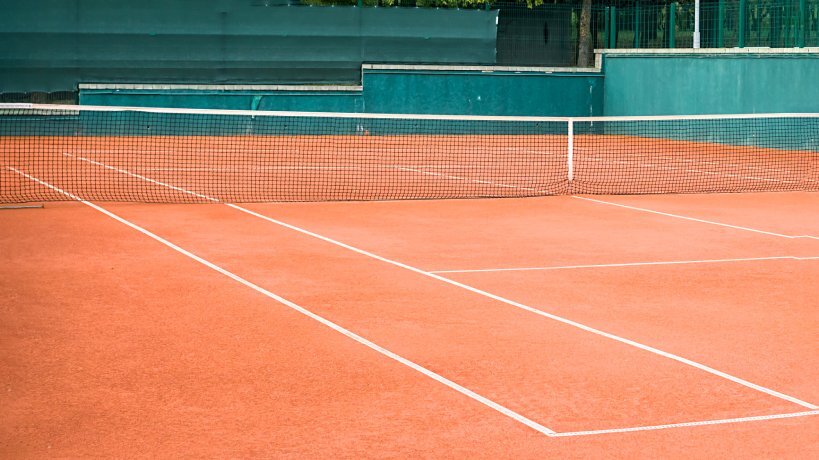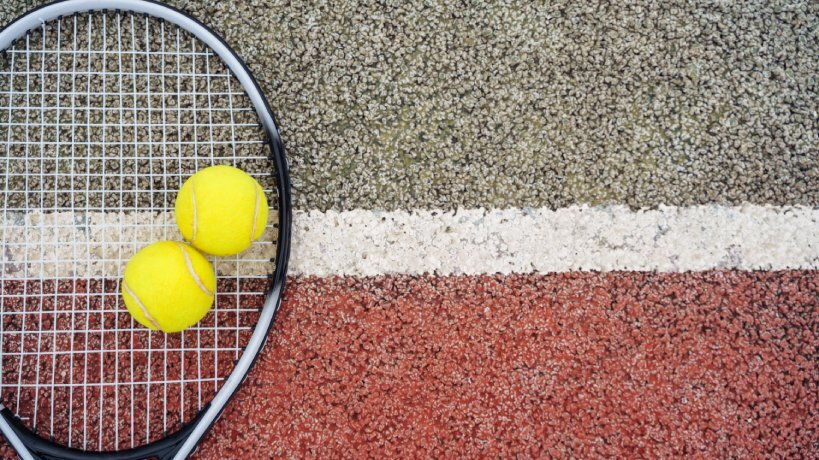Tennis is a sport enjoyed by millions worldwide, but players compete on various court surfaces. Whether you’re an enthusiast or a tennis court owner, understanding the advantages and disadvantages of each surface is essential. Each surface uniquely influences the speed, bounce, and playing experience.
Furthermore, understanding the ins and outs of every court surface can help you select the ideal surface for your location, maintain it effectively, and maximize its lifespan. This complete guide to the different tennis court surfaces will help you explore their characteristics, advantages, and essential care tips.
1. Hard Courts
Hard courts are among the most common surfaces, especially in public and recreational facilities. Constructed from asphalt or concrete with an acrylic coating, these courts are highly durable and suited for all styles of play. The surface offers moderate ball speed and bounce, making it versatile for beginners and professionals.
Hard courts require relatively little maintenance, needing only regular cleaning to remove debris and periodic resurfacing to maintain quality. Since the firm surface can stress players’ joints, manufacturers often use cushioning layers or advanced acrylic systems to mitigate the impact.
Proper care, such as repairing cracks and keeping the surface level, helps extend the court's lifespan. Tennis court owners often prefer hard courts because of their weather resistance and long-term reliability.
2. Clay Courts

Clay courts are popular in Europe and South America and are renowned for their slower pace and high bounce. They are made from crushed brick, stone, or shale, and favor players who enjoy long rallies and strategic gameplay. Clay courts highlight players’ finesse and stamina, making them a staple at historic tournaments like the French Open.
Maintaining a clay court requires consistent effort. Regular dragging helps to smooth the court, while proper watering is necessary to prevent the surface from becoming too loose or dry.
Additionally, sweeping the lines and occasional topdressing keeps the court in optimal condition. For tennis court owners, clay surfaces might require more maintenance than other types, but they provide a unique playing experience that many players appreciate.
Artificial Clay Courts
Artificial clay court surfaces have become an increasingly popular alternative to traditional clay courts. These surfaces replicate the look and feel of natural clay while offering lower maintenance requirements.
Unlike traditional clay, artificial clay courts use synthetic materials and a base layer that ensures consistent playability and durability. They’re less affected by weather conditions, reducing downtime after rain and eliminating the need for frequent watering or resurfacing.
Players appreciate how artificial clay preserves the characteristic slow ball bounce and sliding capability that are hallmarks of clay tennis courts. This makes these surfaces a practical solution for clubs and recreational facilities seeking to balance performance and efficiency.
3. Grass Courts
Many sports enthusiasts associate tennis with the lush green grass courts at Wimbledon. Grass provides the fastest playing surface, creating low ball bounces and unpredictable dynamics from its natural elements. Players with a strong serve-and-volley game will favor this surface.
Grass courts require intensive maintenance. The surface requires frequent mowing, rolling, and irrigation to ensure an even playing field. Maintaining consistent grass density and cutting height is essential for optimal performance.
While these courts demand effort and resources, they exude a classic charm and provide a unique playing experience for tennis enthusiasts. Court owners should carefully evaluate their local climate and soil conditions before choosing this surface, as not every environment is suitable for grass courts.
4. Carpet or Synthetic Courts
Carpet or synthetic courts offer a versatile solution for tennis facilities. These surfaces consist of synthetic materials like rubber, artificial turf, or polypropylene and are often used indoors or in climates that cannot support outdoor tennis. The ball speed and bounce on synthetic surfaces vary depending on the material.
One benefit of synthetic courts is their ease of maintenance. Regular vacuuming or brushing is usually sufficient to keep them in good shape. Additionally, they’re quicker to install compared to traditional surfaces.
While carpet courts don’t offer the traditional tennis feel, they’re ideal for multi-purpose athletic facilities due to their adaptability and minimal upkeep. Tennis court owners exploring all-weather or temporary options lean toward synthetic surfaces for their convenience and cost-efficiency.
5. Acrylic or Cushioned Surfaces

Acrylic and cushioned tennis courts provide comfort and longevity for players. These surfaces combine layers of acrylic with rubber granules or polymer materials to create a playing area with enhanced resilience and shock absorption. Players benefit from reduced joint impact while enjoying consistent ball behavior.
These courts are durable and resistant to wear and tear but still require occasional maintenance. Cleaning the surface periodically and resealing any damage ensures their continued performance and longevity.
Professional tournaments and private facilities often have acrylic courts due to their sleek appearance and performance. They’re an excellent investment for tennis court owners, balancing premium playing conditions with long-term sustainability.
Choosing the Best Surface for Your Needs
When choosing the best tennis court surface, consider key factors such as budget, expected usage, environmental conditions, and maintenance requirements. Hard courts are affordable and easy to maintain, while clay courts provide a classic tennis experience with higher upkeep.
Grass courts add prestige to any facility but demand a specific climate and intensive care. For greater flexibility, synthetic surfaces or cushioned courts could provide more practical benefits for many facility owners.
Think about the players who use your facility. Are they professionals, recreational players, or a combination of both? Understanding player preferences helps you make an informed choice, ensuring the surface meets their needs. No matter the surface, proper care and investing in tennis court maintenance equipment will preserve your court’s condition for decades of future play.
All-Star Tennis Courts: Tennis Court Equipment for Hard Court Surfaces
Owning or operating a tennis court is a rewarding venture, provided you choose the right surface and care for it attentively. This complete guide to the different tennis court surfaces highlights each option's unique characteristics and demands so you can make an informed decision.
Whether you prefer the longevity of a hard court, the charm of a grass field, or the finesse of clay, each surface adds something unique to the tennis experience. Remember to purchase tennis court equipment from All Star Tennis Courts to maintain your court’s pristine condition and stay ready for your next match.

